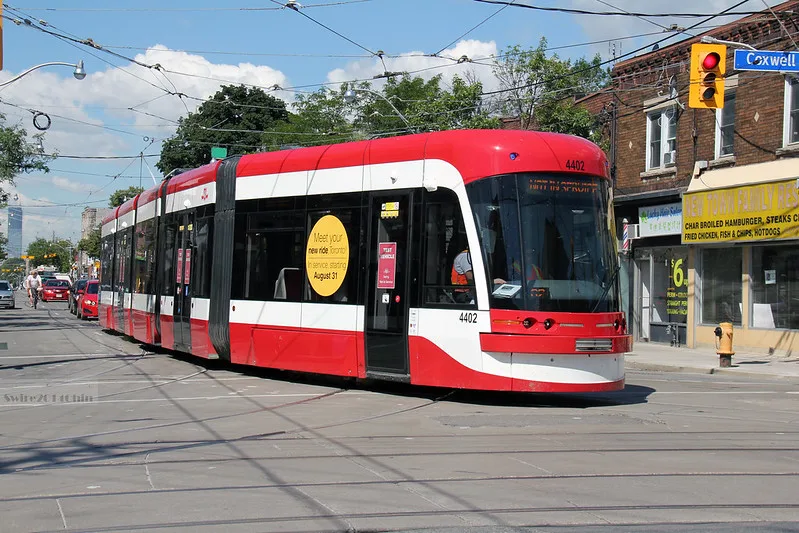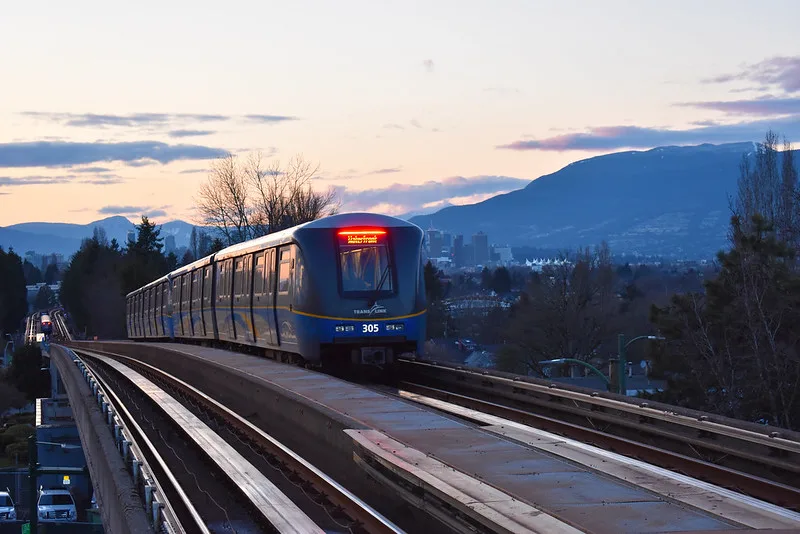Imagine effortlessly navigating through the vibrant streets of Canada’s most dynamic cities. Whether you’re a daily commuter, an adventurous tourist, or simply a curious observer, understanding the public transit systems in Toronto, Montreal, Vancouver, Calgary, and Ottawa can revolutionize your travel experience. Envision a world where every journey is smooth, swift, and accessible to all.
From Toronto’s iconic red streetcars to Montreal’s cutting-edge REM, and from Vancouver’s scenic SkyTrain to Calgary’s punctual CTrain, and Ottawa’s extensive O-Train system, prepare to delve into the intricacies of urban mobility. Embark on this exploration and discover how public transit transforms everyday life, making commuting a breeze and cities more connected than ever.
Public Transit Systems Across Major Canadian Cities
Toronto
Toronto’s public transit is operated by the Toronto Transit Commission (TTC). The TTC is famous for its red streetcars that run on tracks in the streets. Toronto also has a large network of buses and four subway lines. These help people travel across the city quickly and efficiently.

Author : Can Pac Swire – flickr.com
The TTC’s subway system consists of four lines: Line 1 (Yonge-University), Line 2 (Bloor-Danforth), Line 3 (Scarborough), and Line 4 (Sheppard). These lines cover a vast area of the city and make it easy for people to get to work, school, or other destinations. The streetcars run on several routes, providing convenient travel in the downtown core.
Another important service in Toronto is GO Transit. GO Transit connects Toronto with nearby places like Mississauga, Brampton, and Hamilton. It runs both trains and buses, making it easy for people to commute to Toronto for work or fun. GO Transit operates seven train lines and numerous bus routes that connect the Greater Toronto Area (GTA) with the city.
Montreal
Montreal’s public transit system is managed by the Société de transport de Montréal (STM). The STM operates buses and a metro system. The metro has rubber-tired trains, which provide a smooth and reliable ride. It has four lines that cover different parts of the city, making it easy to travel around Montreal.
The four metro lines are Line 1 (Green), Line 2 (Orange), Line 4 (Yellow), and Line 5 (Blue). These lines serve many neighborhoods and key areas like downtown, making commuting efficient. The STM also runs an extensive bus network that reaches areas not covered by the metro, ensuring comprehensive coverage.
Recently, Montreal introduced the Réseau express métropolitain (REM). This new light rail network connects the suburbs with downtown Montreal, making commuting faster and more convenient. The REM is a major addition to Montreal’s transit system, providing high-frequency service and reducing travel time for many commuters.
Vancouver
Vancouver’s transit system is run by TransLink. It includes buses, the SeaBus, and the SkyTrain. The SkyTrain is an automated rapid transit system and one of the longest in the world. It offers beautiful views of the city and has three lines that connect downtown Vancouver with the airport and the suburbs.

Author : Ana Iammatteo – flickr.com
The SkyTrain lines are the Expo Line, Millennium Line, and Canada Line. The Expo Line connects downtown Vancouver to Burnaby, New Westminster, and Surrey. The Millennium Line serves Vancouver, Burnaby, and Coquitlam. The Canada Line links downtown Vancouver with the Vancouver International Airport (YVR) and Richmond. These lines provide fast and reliable service across the metropolitan area.
The SeaBus is a passenger ferry that crosses the Burrard Inlet, linking downtown Vancouver with the North Shore. This ferry ride offers stunning views of the water and the city skyline. Vancouver also has a large bus network that covers areas not served by the SkyTrain or SeaBus, making public transit accessible to everyone.
Calgary
Calgary’s public transit is operated by Calgary Transit, which runs buses and the CTrain. The CTrain is a light rail system known for being on time and covering a large area. It has two lines that connect residential areas with downtown and other key locations.
The two CTrain lines are the Red Line and the Blue Line. The Red Line runs from Tuscany in the northwest to Somerset-Bridlewood in the south, passing through downtown. The Blue Line runs from Saddletowne in the northeast to 69 Street in the west, also serving downtown. These lines make commuting easy for people living in different parts of the city.
Calgary’s bus network supports the CTrain by serving areas that the train does not reach. Calgary Transit operates numerous bus routes that cover the entire city, ensuring that all neighborhoods have access to public transit. The buses are equipped with modern amenities, making them comfortable and convenient for daily travel.
Ottawa
Ottawa’s public transit is managed by OC Transpo, which operates buses and the O-Train. The O-Train is a light rail system with two lines that connect different parts of the city, including downtown and the university area. Recent expansions have improved the network’s coverage and efficiency, making it easier for residents to travel across the city.
The O-Train lines are the Confederation Line (Line 1) and the Trillium Line (Line 2). The Confederation Line is a modern light rail line that runs east-west through the city, connecting key areas like downtown, the University of Ottawa, and major shopping centers. The Trillium Line runs north-south, linking the city’s south end with downtown.
OC Transpo’s bus network is extensive, covering both urban and suburban areas. The buses have modern features like real-time tracking, which allows passengers to check bus schedules and arrival times on their smartphones. This makes public transit in Ottawa convenient and user-friendly. The bus routes are designed to connect seamlessly with the O-Train, providing comprehensive coverage of the city.
Features of Effective Public Transit Systems
Public transit systems play a vital role in making cities accessible and livable. Effective systems share certain key features that make them valuable for everyone. Let’s explore these features in a simple and easy-to-read way:
- Accessible for Everyone: An effective transit system is easy for everyone to use, including people with disabilities. Features like ramps, elevators, and low-floor buses help those with mobility issues. Clear signs, audio announcements, and braille information also assist passengers in navigating the system. Accessibility ensures that no one is left out and everyone can travel comfortably.
- Frequent and Reliable Service: A good transit system has buses and trains that run often and on time. Frequent services mean less waiting, making it convenient to use. Reliability ensures that schedules are followed, helping people trust and depend on public transit to get them where they need to go without delays.
- Affordable Fares: Affordability is crucial so that everyone can use public transit, regardless of their income. Some systems offer discounts for students, seniors, and low-income individuals. By keeping fares reasonable, more people are encouraged to use public transit, reducing traffic and pollution.
- Safety Measures: Safety is a top priority. Well-lit stations, security cameras, and staff presence create a secure environment. Regular maintenance of vehicles and infrastructure prevents accidents and breakdowns. When passengers feel safe, they are more likely to use public transit.
- Good Connectivity: Effective transit systems connect different modes of transport, like buses, trains, and bikes. This makes it easy to switch from one mode to another. For example, bus stops near train stations or bike-sharing spots near bus stops enhance convenience and create a smooth travel experience.
Great Customer Service
Good customer service improves the transit experience. Friendly staff can assist passengers and provide helpful information. A responsive customer service team that handles complaints and feedback ensures continuous improvement in the system’s quality.
Conclusion
Toronto’s TTC and GO Transit offer extensive subway, streetcar, and bus services for efficient city and regional travel. Montreal’s STM and REM provide comprehensive metro and light rail coverage, enhancing urban and suburban connectivity. Vancouver’s TransLink features the automated SkyTrain, SeaBus ferry, and a wide bus network for seamless metropolitan transit. Calgary’s Calgary Transit operates the punctual CTrain light rail and a supportive bus network, ensuring broad city access. Ottawa’s OC Transpo includes the O-Train light rail and a detailed bus network, promoting convenient and user-friendly travel.
FAQs
What are the main features of Toronto’s public transit system?
Toronto’s public transit system, operated by the TTC, includes subways, streetcars, and buses. It also integrates with GO Transit for regional travel, connecting Toronto with nearby cities.
How does Montreal’s REM differ from the STM metro system?
The REM is a new light rail network designed to connect Montreal’s suburbs with the downtown area, providing high-frequency service. The STM operates the traditional metro system with four rubber-tired lines serving the city.
What makes Vancouver’s SkyTrain unique?
Vancouver’s SkyTrain is an automated rapid transit system that offers scenic views of the city and connects downtown with the airport and suburbs. It’s known for its efficiency and automation.
What are the main transit options in Calgary?
Calgary Transit operates the CTrain, a light rail system with two main lines, and a comprehensive bus network. The CTrain is known for its punctuality and extensive coverage.
How does Ottawa’s O-Train integrate with the city’s bus network?
Ottawa’s O-Train, consisting of the Confederation and Trillium Lines, is complemented by OC Transpo’s extensive bus network, ensuring comprehensive coverage and seamless connectivity across the city.